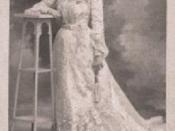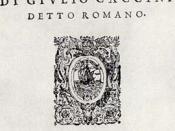In teaching voice, many instructors have come to use the Bel Canto style. This is the technique by which one learns to produce quality sound by singing quality music. Such a form of pedagogy can be found in many schools of music worldwide. Because the Bel Canto style has become a dominating method in teaching, one must look at the history of the style to understand better how to utilize this method with students.
As opera began to develop at the beginning of the of the seventeenth century, a new outlet was created for virtuosity to be shown in vocal performances and the lyric solo was brought into use through monody. With the later development of the aria and recitative the performer was able to move the plot along in rapid passages, then during the height of the drama, the aria was able to use expression to effectively deliver the climax to the audience.
The vocal abilities shown during these arias wowed the public. Though this came, "a new vocal idiom ... known as Bel Canto - smooth, mainly diatonic lines and flowing rhythm gratifying to the singer." This era was considered as the "Golden Age of Song," when singing achieved its highest perfection and Bel Canto or beautiful singing came into its own.
While vocal training did not start during the time of opera with the Bel Canto methods, some of the prominent teachers of voice have described ideals found in Bel Canto. Giulio Caccini's Nuove Musiche dealt with some of the faults of vocal training of his time, however they lacked detailed analysis and talked more about monody and less about vocal technique. A more extensive look at Bel Canto was left in Observations on the Florid Song by Pietro Fancesco Tosi - "a renowned singer and composer...


